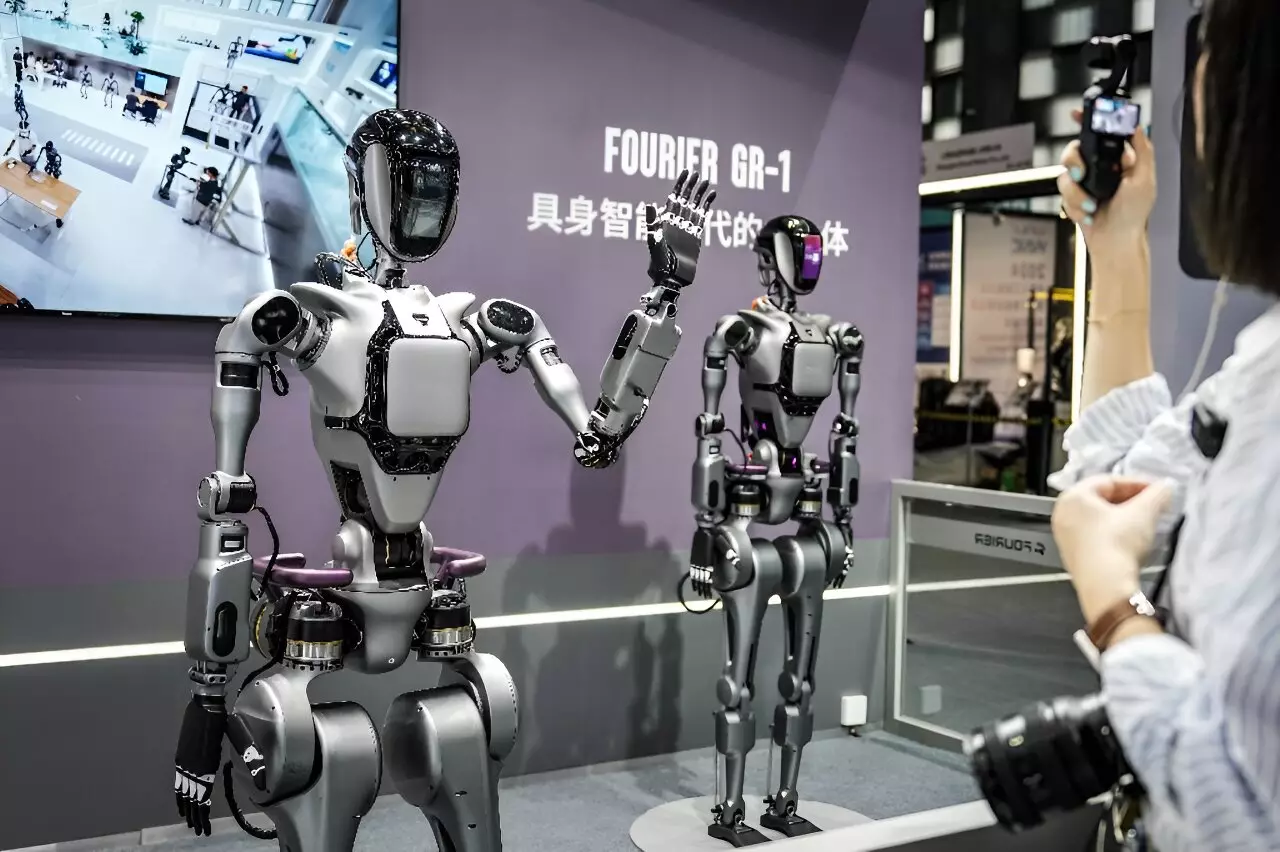China’s AI sector is exuding confidence at a significant fair in Shanghai, showcasing a determination to overcome obstacles imposed by Western restrictions. The industry is buzzing with the development of cutting-edge products, thanks to a burgeoning pool of young and talented individuals. Notably, the United Nations has reported that China has been the leading filer of patents for AI software in recent years, encompassing everything from illustrations to computer code. The World AI Conference held in Shanghai has served as a platform for exhibitors to display various generative AI products. For instance, one stall featured realistic “watercolors” and sci-fi-themed illustrations generated by innovative software. Additionally, a group of humanoid robots, crafted by nearly a dozen Chinese entities, entertained visitors by synchronously waving and raising their hands.
Despite the constraints imposed by Western entities, individuals like Ethan Duan, associated with a startup incubator, express optimism about China’s AI prowess. Duan believes that China’s vast population of tech talent can potentially offset the challenges posed by Western restrictions. While a sudden restriction on access to OpenAI’s API might present immediate hurdles to corporations, Duan suggests that the long-term impact remains uncertain. Encouragingly, statistics indicate that China has significantly expanded its domestic AI talent pool to cater to the demands of the growing industry. A global AI tracker by MacroPolo indicates that China housed nearly half (47 percent) of the world’s top AI researchers in 2022, a notable rise from 29 percent in 2019.
Amidst increased scrutiny and restrictive measures from the United States and other countries targeting China’s AI sector, the atmosphere at the Shanghai fair remains buoyant. OpenAI, a prominent US company responsible for ChatGPT, has accused China of leveraging its language models to shape social media content. Consequently, the company plans to discontinue its app programming services for Chinese developers. Additionally, the US government has revoked export licenses for certain American chips utilized by Chinese tech giants, further complicating the landscape. Despite these challenges, interest in AI products continues to soar at the Shanghai fair, with enthusiastic crowds flocking to explore games and interactive exhibits.
Industry insiders like Shi Yunlei, the founder of an AI-equipped health equipment company, remain optimistic about the future. Yunlei notes a growing interest from visitors in his products, even at stages prior to mass production. Notably, industry professionals like Lyu Meixiu from OpenCSG believe that US restrictions have not significantly impacted their operations, as they are actively expanding internationally. Meixiu emphasizes China’s strength in technological innovation and predicts that the technological gap between the US and China will continue to narrow, if not reverse. A speech by Li Qiang, a high-ranking Chinese official, at the conference further underscored China’s dedication to advancing AI technology. Premier Li urged global nations to adopt open-minded approaches towards AI, emphasizing the need for cross-border data movement, free trade of equipment, and interconnected infrastructure.
China’s AI sector is poised for continued growth and innovation, fueled by a rich talent pool and a resilient attitude towards overcoming challenges. Despite external pressures and restrictions, the industry remains resolute in its pursuit of technological advancement and global competitiveness. As China continues to assert its dominance in the AI landscape, the world watches with anticipation to see how this evolving sector will shape the future of technology on a global scale.


Leave a Reply